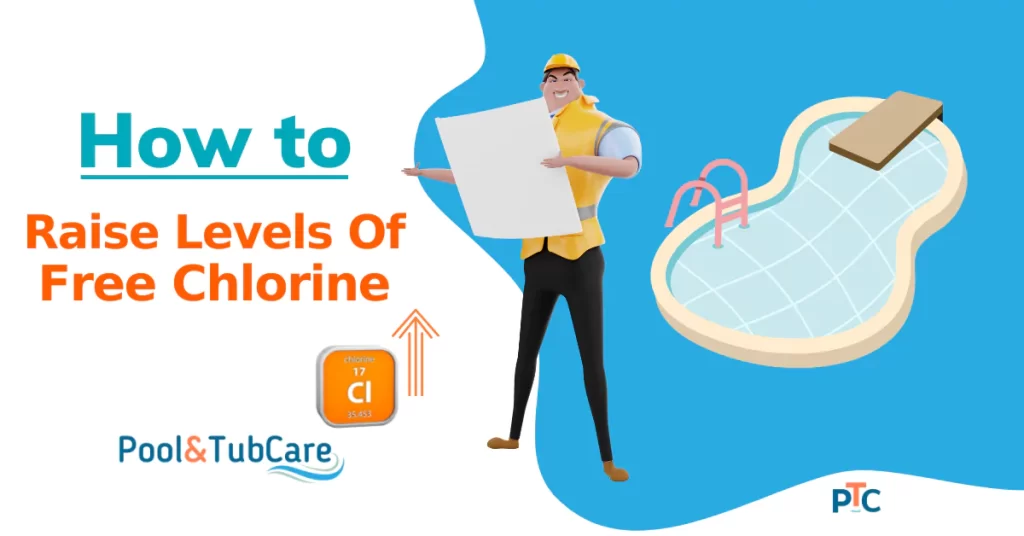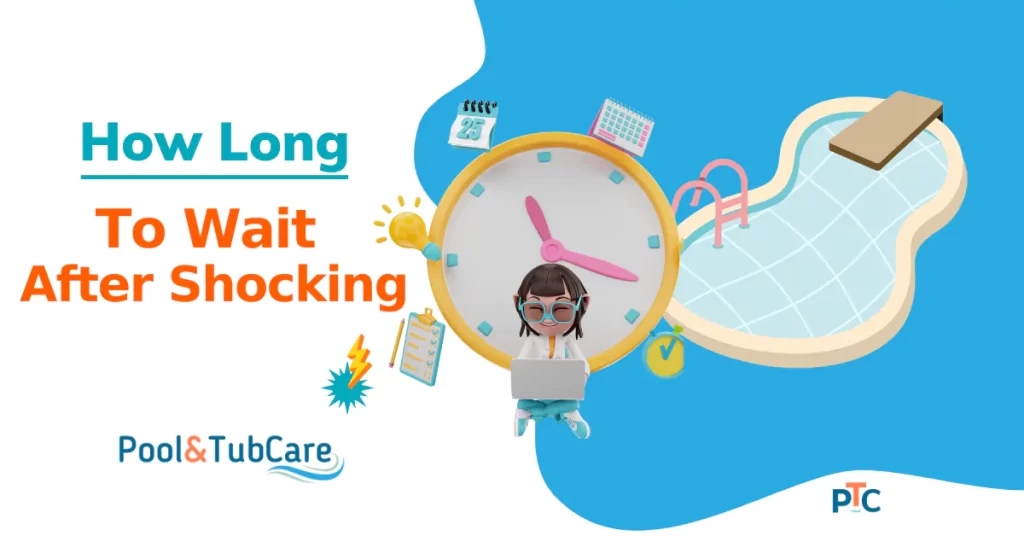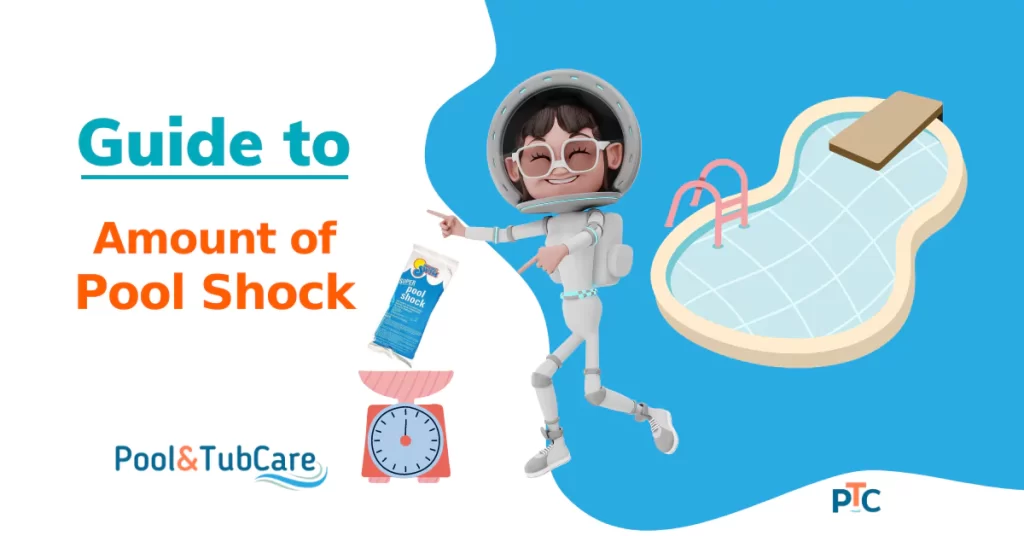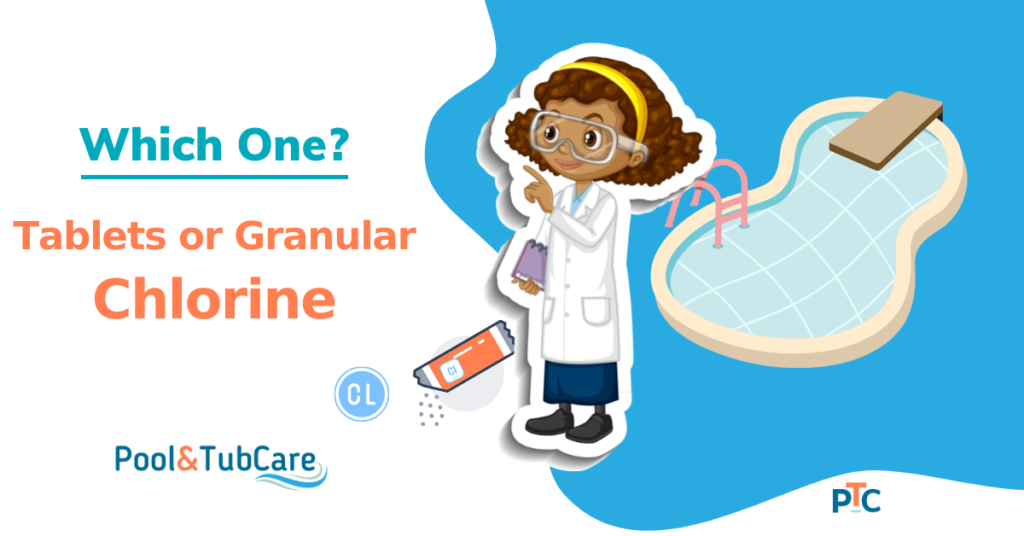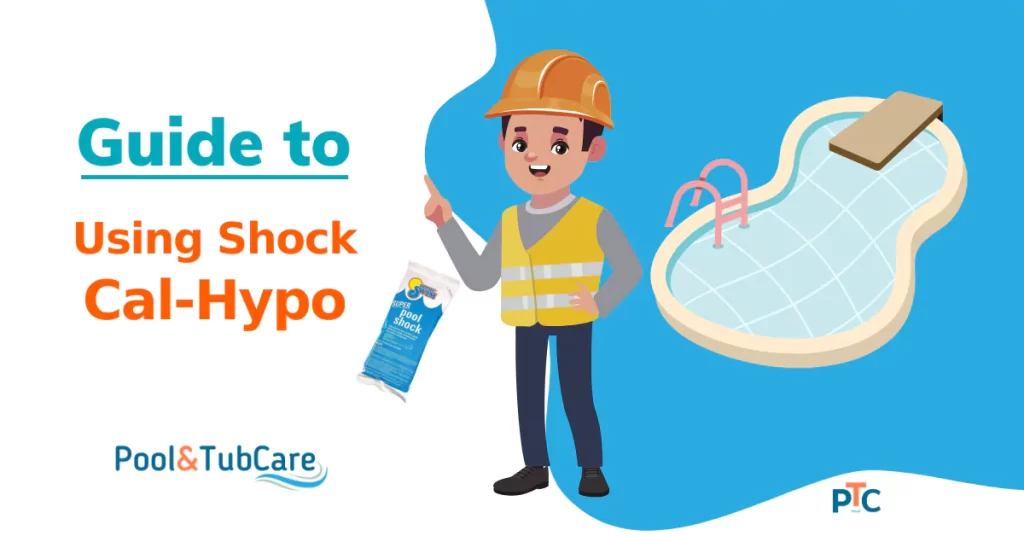Keeping the water in a swimming pool clear and balanced is a routine task. There are many things to manage, and free chlorine levels are one of them.
Free chlorine is what keeps your pool sanitized. It kills bacteria and algae and breaks down organic waste. If the levels of free chlorine in your pool water are very low (less than 1ppm), your pool will be full of all these nasty things.
You can quickly increase the free chlorine levels by adding chlorine (granules or liquid). Even after adding more chlorine, if your free chlorine levels are not rising, your pool might suffer from chlorine demand, and you need to shock your pool with a chlorine-based shock. Imbalanced Cyanuric Acid levels can be another reason for low chlorine levels.
You may need to triple shock if chlorine levels are still low, or some other chemicals might be keeping your free chlorine levels low.
Continue reading to know what all things can cause low chlorine levels and how to raise free chlorine levels.
What Exactly is Free Chlorine
The amount of chlorine available to sanitize your pool water is called free chlorine. In other words, it is the chlorine that has not been depleted and is still capable of killing pollutants.
Bacteria and other dangerous microorganisms can grow in water that lacks adequate free chlorine.
The free chlorine level in your water should be between 1 and 3 ppm.
When free chlorine neutralizes pollutants, it makes combined chlorine, aka chloramines.
The combined chlorine level should be ideally below 0.2 ppm and never exceed 0.5 ppm.
If the combined chlorine concentration becomes too high, your chlorine will not work properly and give the characteristic chlorine odor.
Total chlorine is the sum of free and mixed chlorine. Total chlorine levels should be ideally equal to free chlorine which means none of the chlorine has been used up (combined chlorine) and it is ready to be utilised as a sanitizer.
Why You Need Free Chlorine
Free chlorine is essential because it eliminates germs and other potentially harmful microbes. Bacteria from swimmers’ bodies, the environment, or other sources can pollute pool water.
To eliminate these bacteria and other germs, chlorine is added to swimming pools. It also keeps algae cells at bay.
The best agent for eliminating bacteria and other germs is free chlorine. Ensuring your pool has enough free chlorine is essential for this reason.
What Are The Causes of Low Free Chlorine Levels
Several factors accelerate the use of chlorine in a pool. Here are a few things you can look into to find out what can be the culprit in your case so that you can remedy it accordingly:
1. You Might Not Be Adding Enough
First and foremost, you might be adding less chlorine than the pool requires.
Or it might be the case that you have refilled the whole pool or a part of it.
Fresh water will decrease the concentration of all the chemicals present in water.
You need to calculate how much water is in your pool and then calculate the amount required to raise free chlorine to 1-3ppm.
Here is a calculator to determine the water volume in your pool. Just put in the numbers and calculate the water volume.
Then simply find out on the packaging of your chlorine to find out the exact amount required per 10,000 gallons of water.
2. Higher User Load
Chlorine sanitizes the organic waste and other pollutants, and if more of them are there in the water, more chlorine will be used up.
If an unusually high number of people use the pool, they will get water dirtier with all the body oils, sweat, sunscreens, and body cells.
Your chlorine has to work hard to clear all the organic waste, and in the process, free chlorine is used up and changed into chloramines.
This will lead to low chlorine levels. An abnormally high amount of impurities can lead to chlorine demand, and you need more chlorine (triple-shock) to get rid of it.
So, if you had a pool party recently, that might be the cause of lower free chlorine molecules in your pool water.
3. Combo of Sunlight and Low Cyanuric Acid
Your chlorine levels will decrease in the sun if you’re using unstabilized chlorine to sterilize your water (i.e., liquid chlorine) as UV rays break down the free chlorine molecules.
Stabilizer (Cyanuric Acid) protects chlorine from the sun and increases its life from a few hours in direct sunlight to 3 to 5 days.
If you have an outdoor pool and you are not using a pool stabilizer, it may cause low free chlorine levels within a few hours after adding chlorine.
Check your cyanuric acid levels and increase Cyanuric Acid levels to save chlorine from breaking down in the sunshine. It should be between 30 to 50 ppm.
4. Very High Cyanuric Acid Levels
That takes us to our next point. Cyanuric Acid is essential to save your chlorine in an outdoor pool from sunlight, but too much of anything is not good.
The same is the case for pool stabilizers.
It works by binding with free chlorine molecules and saving them from sunlight. But if the Cyanuric Acid levels are too high, they can overbind with stabilizers, and not enough chlorine will be available to sanitize the pool.
If the level of Cyanuric Acid is above 50 ppm, it may lead to chlorine lock, and you may have to lower Cyanuric Acid levels in the pool by refilling the pool.
5. Rain Water
Rainwater can be one of the causes of low chlorine levels. It dilutes the pool water and reduces the concentration of all the chemicals, including chlorine.
Rain also brings in many pollutants into the water, increasing the chlorine workload and leading to low free chlorine levels.
6. Low Salt in Salt Water Pool
In the case of saltwater pools, your chlorine generator uses salt in the water to make chlorine molecules. If there is not enough salt, it won’t be able to make the required amount of free chlorine.
Check the salt levels in your pool and keep them in the ideal range of 2k to 4k ppm to have enough free chlorine in your pool water.
How to Raise Free Chlorine Levels in your Pool?
Now that you know what might be causing the low levels of free chlorine in your pool, here are a few ways to increase them.
- Test Free Chlorine: First of all, test the free chlorine level in your pool to know how much you need to increase.
- Test Other Chemicals: Test for Cyanuric Acid, pH, and alkalinity to make sure that they are in an acceptable range of pool chemistry. If they are imbalanced, your chlorine will not work as intended. Balance them as required.
- Add Chlorine: After everything is balanced in your pool, calculate how much chlorine you will require to increase free chlorine levels to desired levels of 1 to 3 ppm. Add chlorine (preferably in granular form) and circulate the water for a few hours to mix them properly.
- Test Water Again: If the free chlorine levels have not increased, you will need to shock your pool with chlorine-based shock.
- Shock Your Pool: Your pool might be in chlorine demand, so it needs huge amounts of chlorine to reach a normal working state. Shocking increases the concentration of free chlorine up to 10 times normal levels. This will sanitize your pool from all the unwanted pollutants that keep chlorine levels low. The best pool shock is cal-hypo for such issues, but you can choose the best one based on your pool conditions, as detailed in this pool shock guide. To use pool water, you must wait 6 to 12 hours after using chlorine-based shock.
- Test the Water Again: After 8 hours of circulation, check free chlorine levels. If after shock chlorine levels are not up to desired levels, triple-shock your pool. Make doubly sure that Cyanuric Acid levels, pH, and Alkalinity is in a proper range.
Related: How to lower free chlorine levels in the pool!
What If Chlorine Levels Are Low for Too Long
Free chlorine keeps your pool clean, if the levels of it are low, there will be an increase in the growth of unwanted microorganisms like Bactria, which might cause many types of diseases in swimmers.
Other than bacteria, algae can start taking hold without enough chlorine in pool water. Algae is challenging to eliminate and can lead to other related issues like slimy and damaged pool surfaces other than allowing more bacteria to grow.
Organic pollutants will also increase in the pool water with low chlorine, which may irritate swimmers’ eyes and skin.
So, your free chlorine must never go below one ppm. Keep shocking your pool weekly with non-chlorine shock so that free chlorine is free to do its job.
If, for some reason, free chlorine levels go down, shock your pool with chlorine-based shock to get chlorine levels to normal.
Get Your Free Chlorine to Working Levels
A low amount of free chlorine is not good news for your pool. That is why you need to keep a tab on chlorine levels by checking them each or on alternate days.
Make sure free chlorine levels are between 1-3 ppm. On either side of these levels, your pool might not be safe for swimming.
It is pretty easy to raise free chlorine levels if they are down, so always stay in charge of the situation.
FAQs on How to Raise Free Chlorine Levels
Here are a few frequently asked questions.
What if free chlorine levels are always low in my pool?
If your pool has been suffering from low chlorine levels for too long, you might have a chlorine demand problem; you need to shock or triple-shock your pool to rectify it. Also, check Cyanuric Acid levels; they are a pretty common cause of not proper working of free chlorine levels.
Why is my free chlorine so low?
If your pool is in direct sunlight and you don’t use Cyanuric Acid, a higher bathing load, rainwater, and imbalanced pool chemicals can lead to low free chlorine levels. If you can figure out the cause, you can easily sort out the problem.
Does non-chlorine shock raise free chlorine?
Non-chlorine shock won’t introduce chlorine to your pool; thus, it won’t increase free chlorine levels. Chloramines, also known as combined chlorine, will be removed by non-chlorine shocks.
Is it safe to swim in a pool with low chlorine?
Don’t use a pool with low chlorine levels, as it may result in illness and irritation of the eyes or skin. Without enough free chlorine that works as a sanitizer, a pool will become a hotbed of many bacterial diseases in a few days. So, keep chlorine levels above 1ppm if you have a chlorine-based pool.

